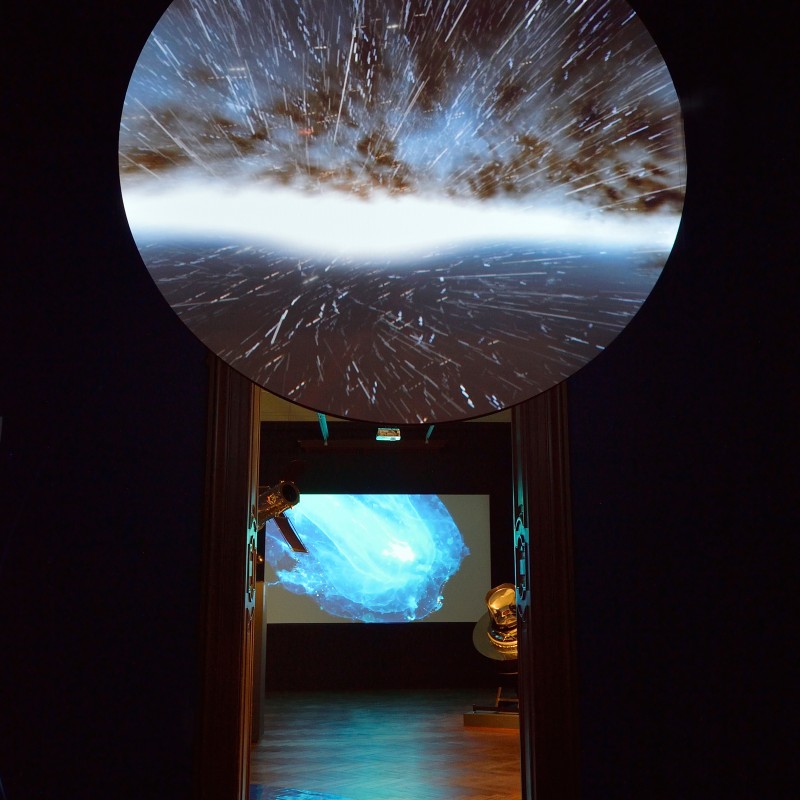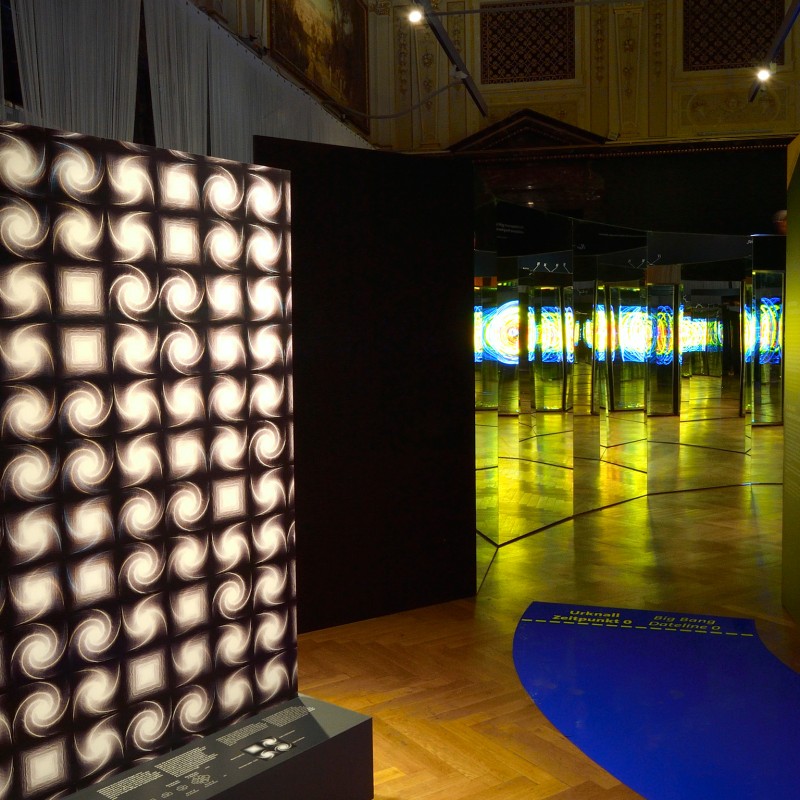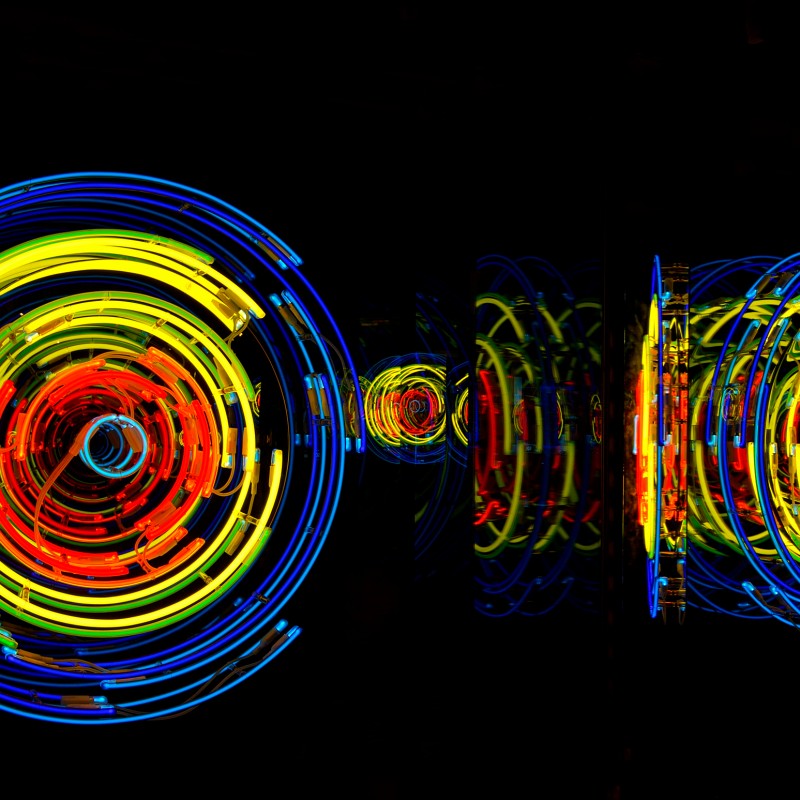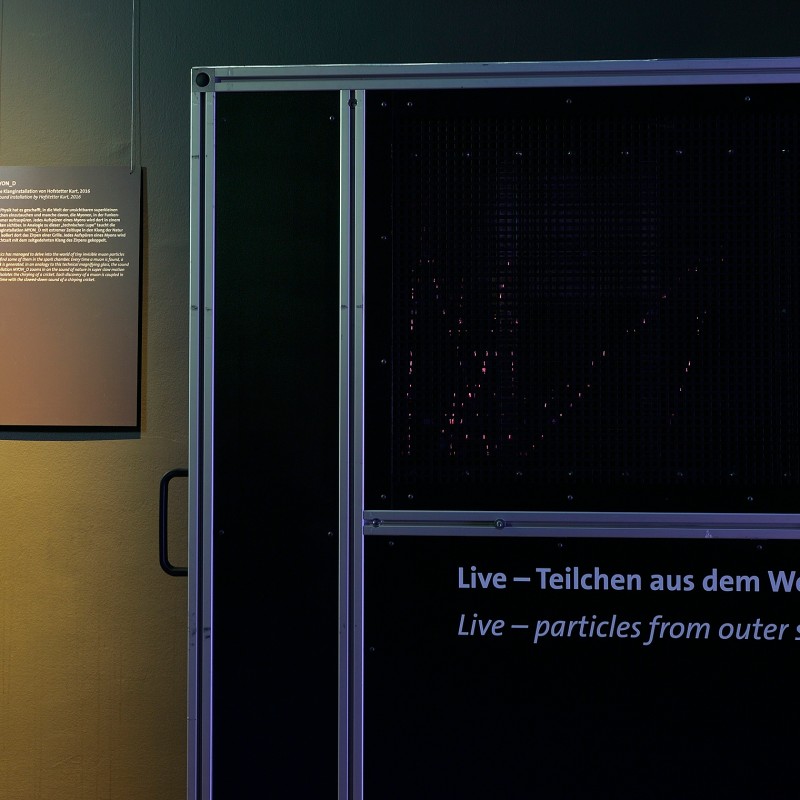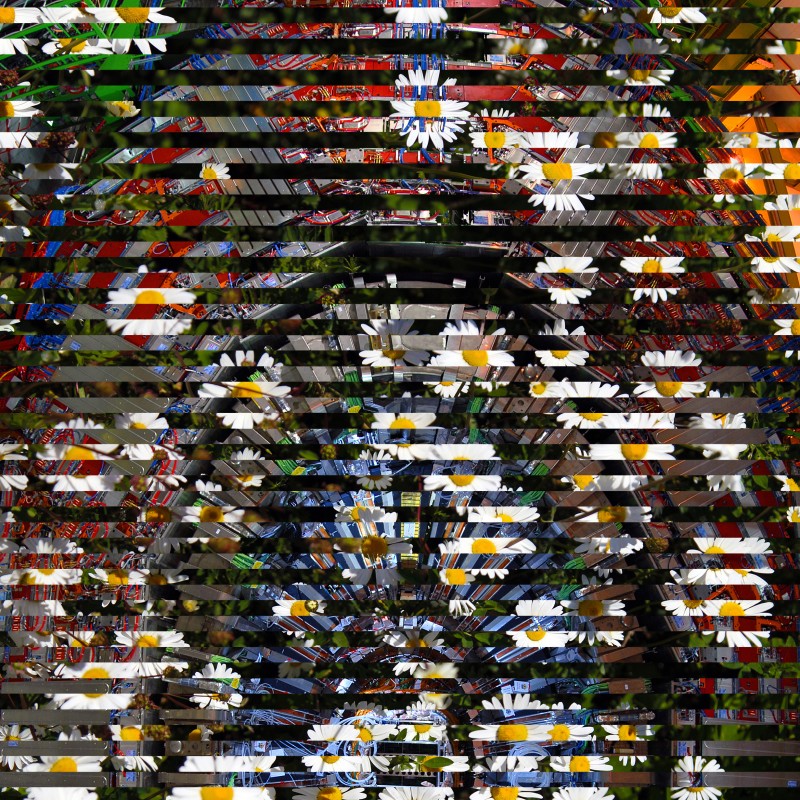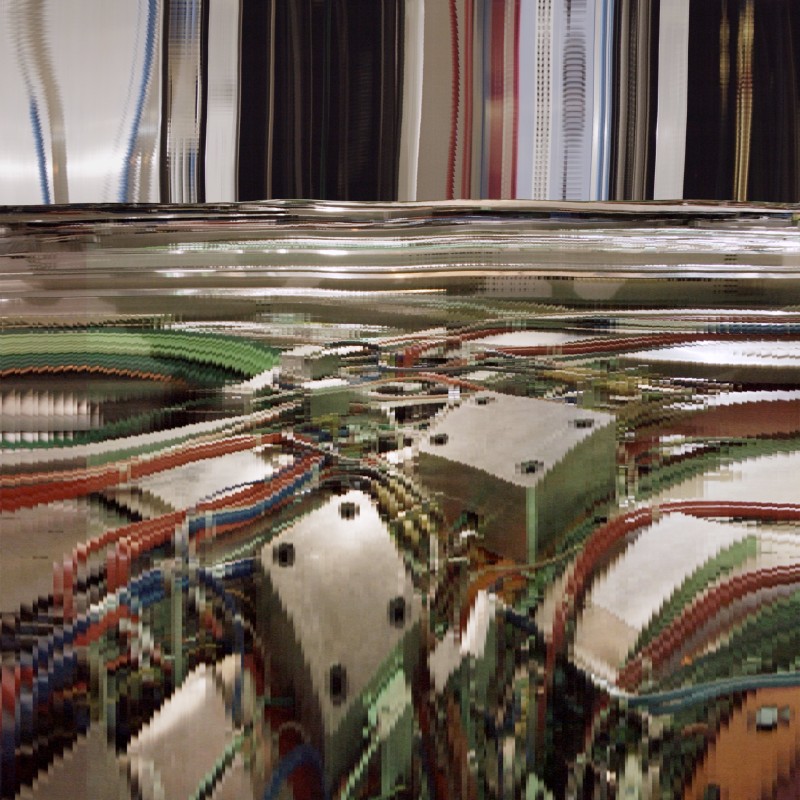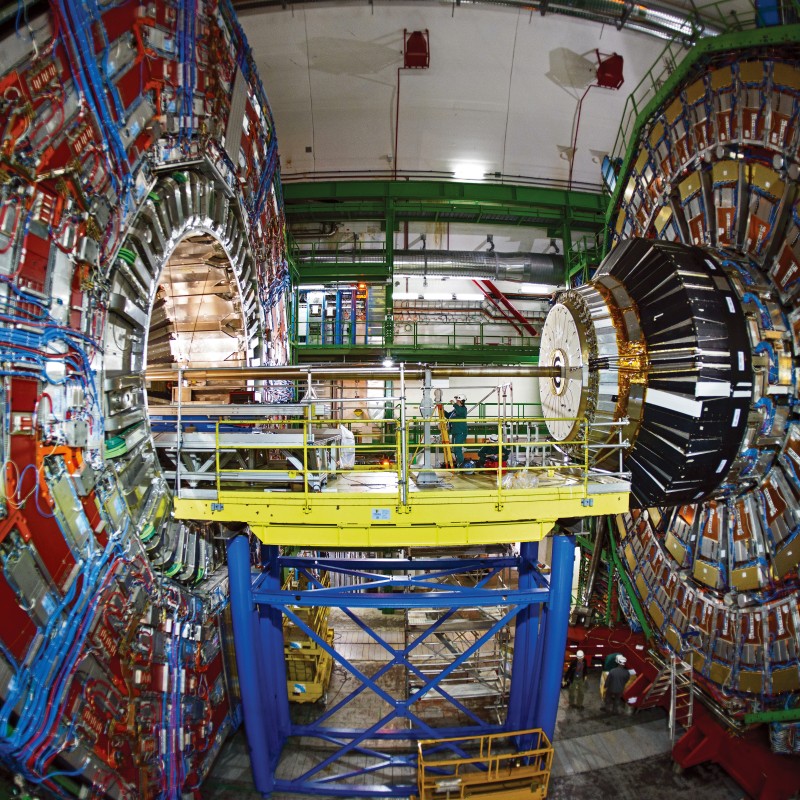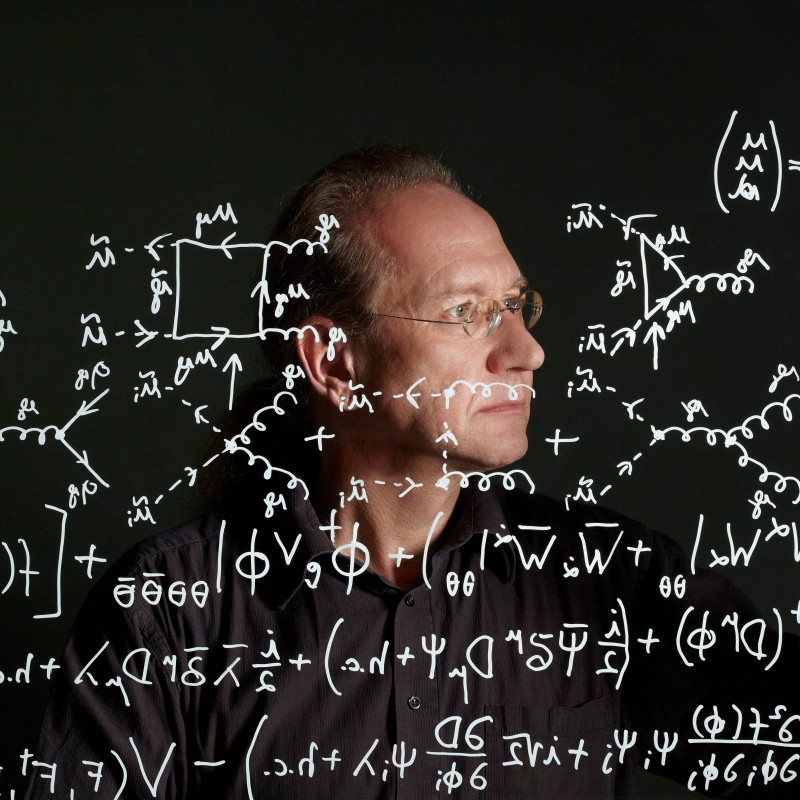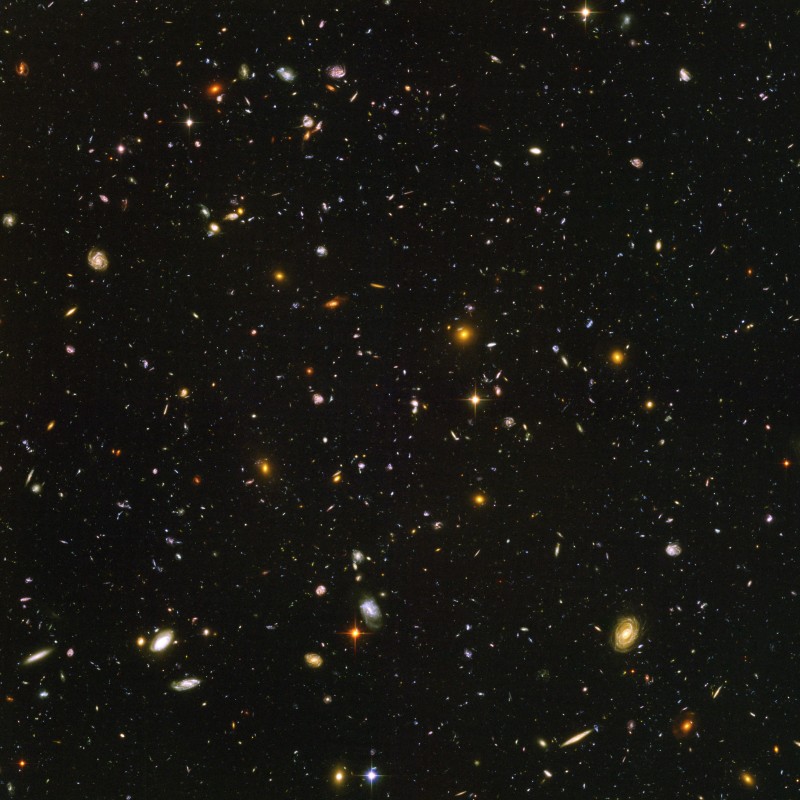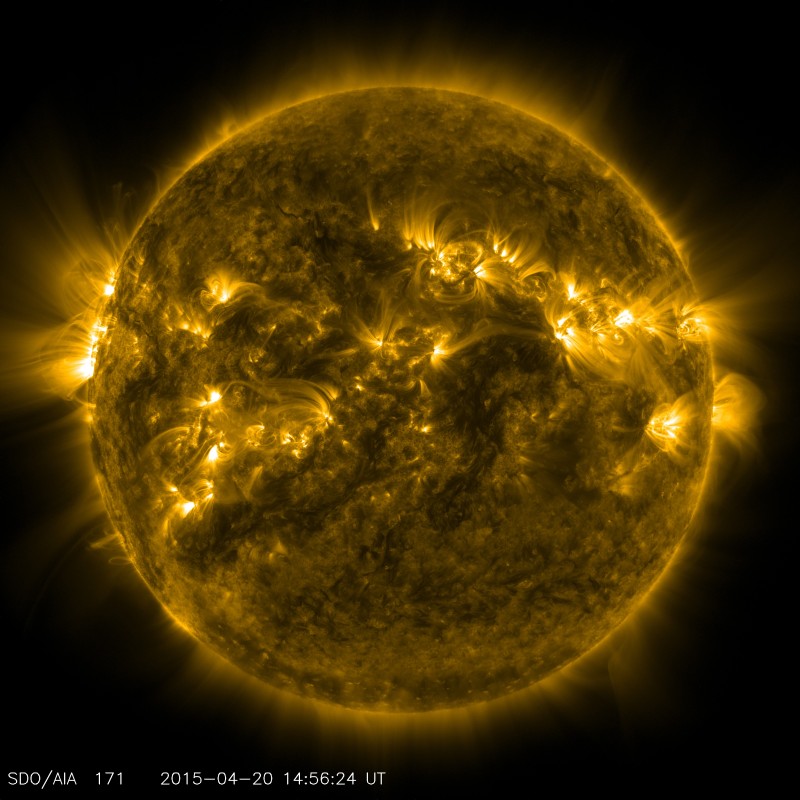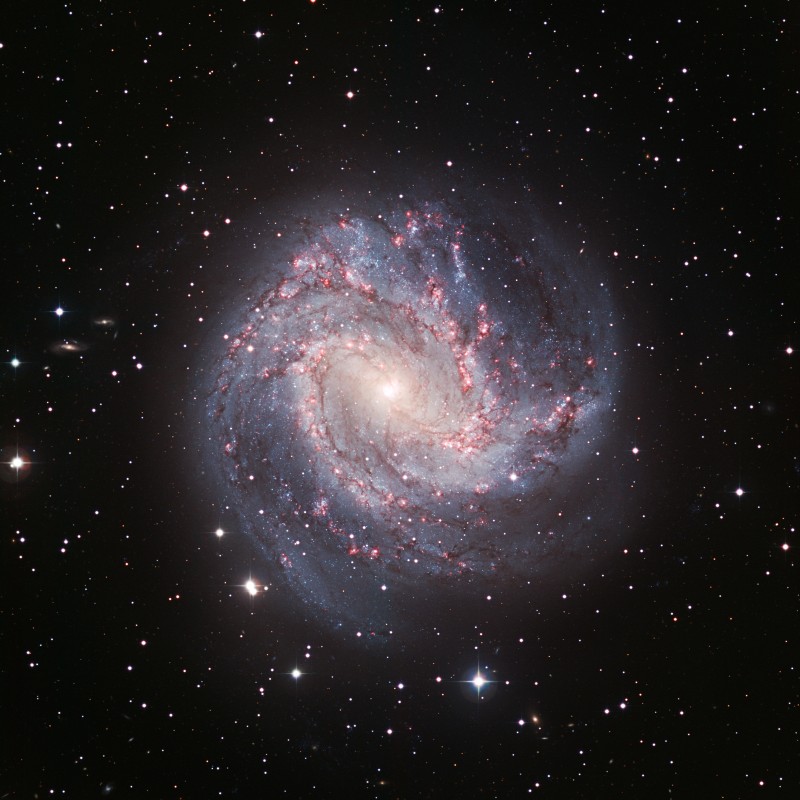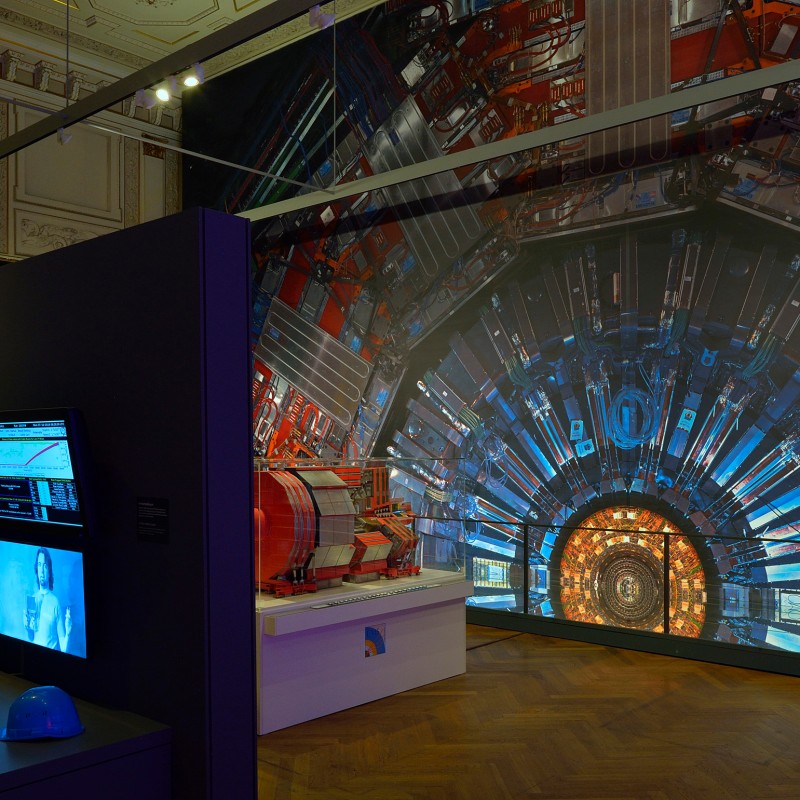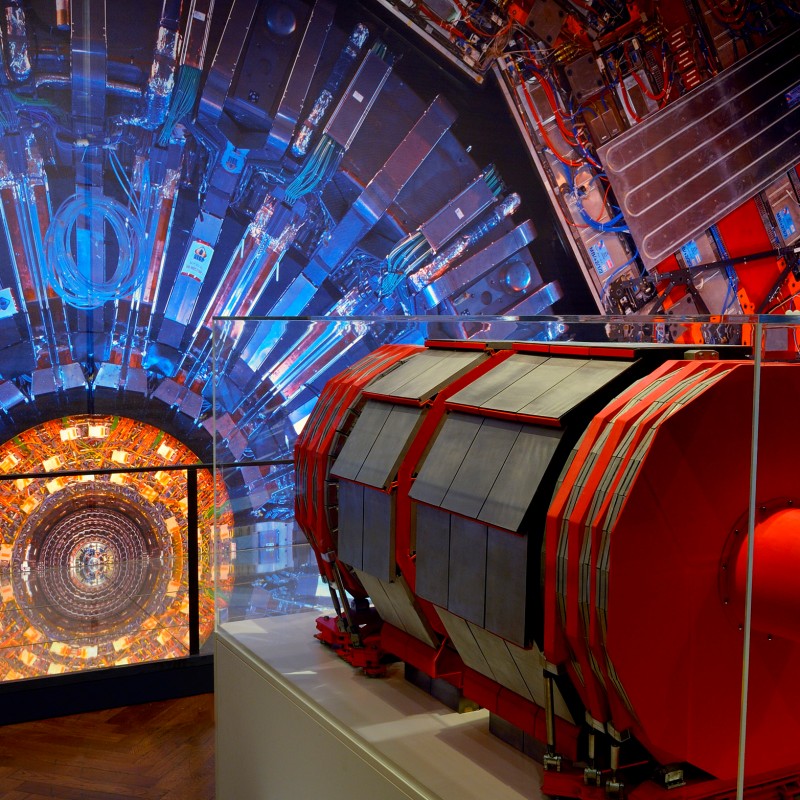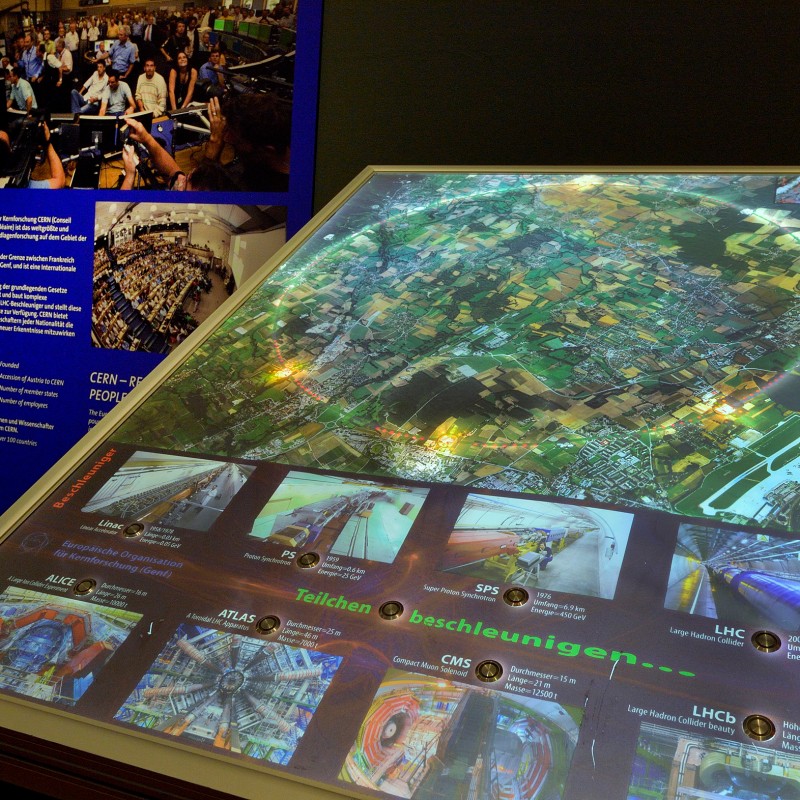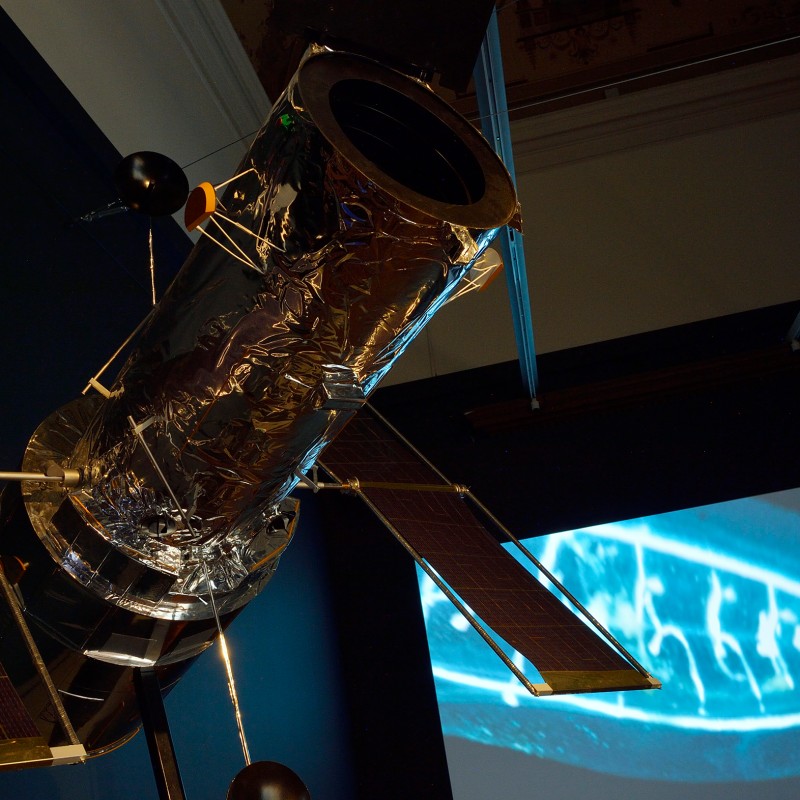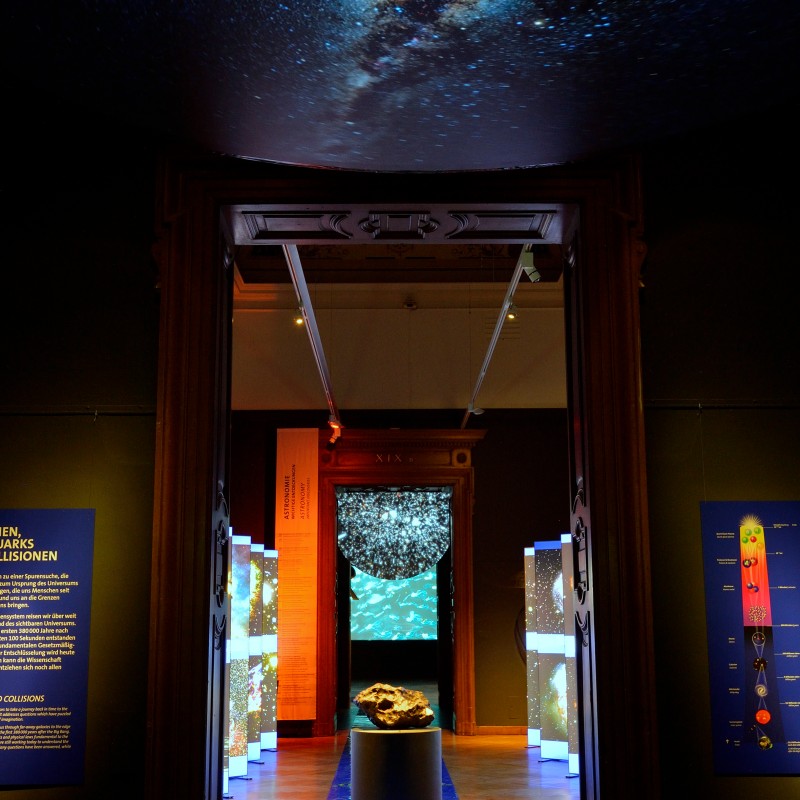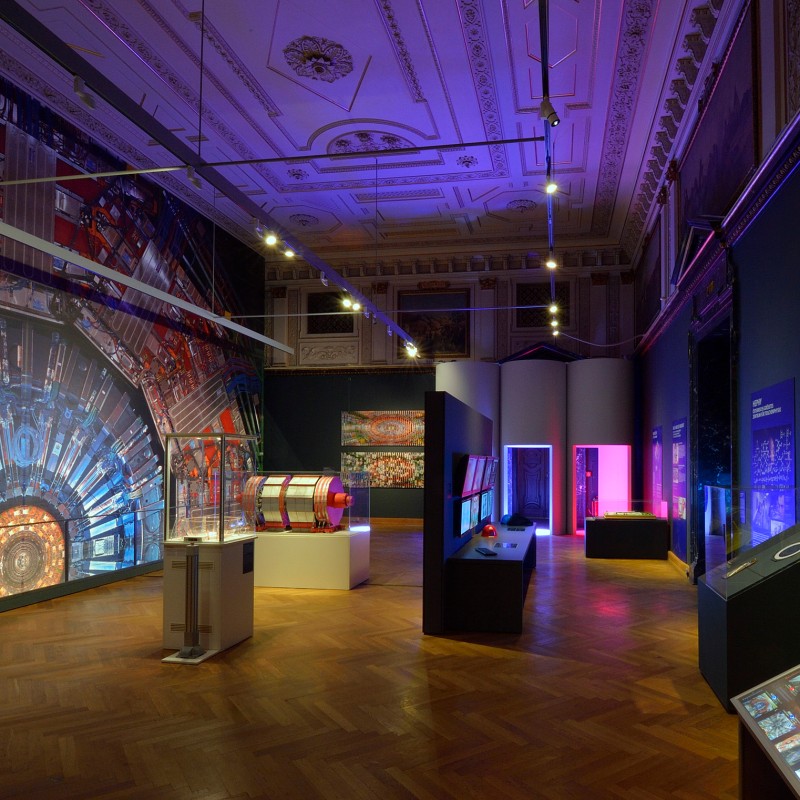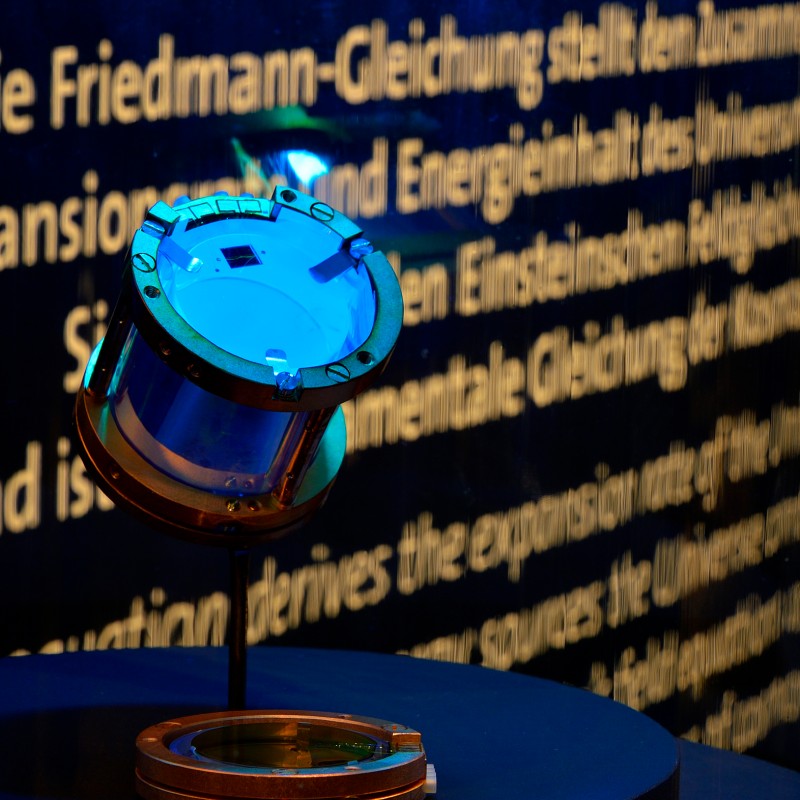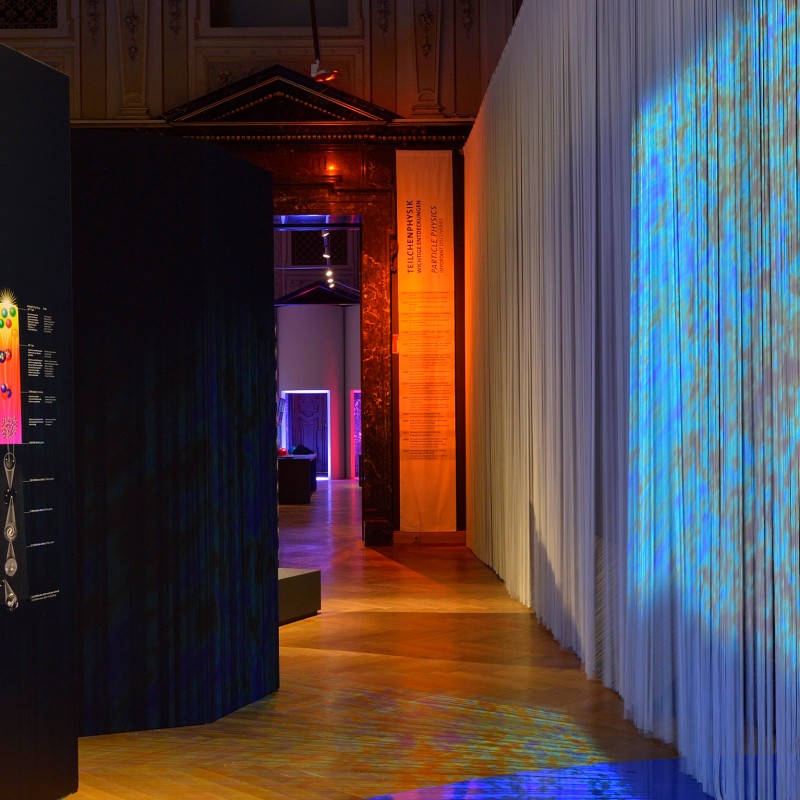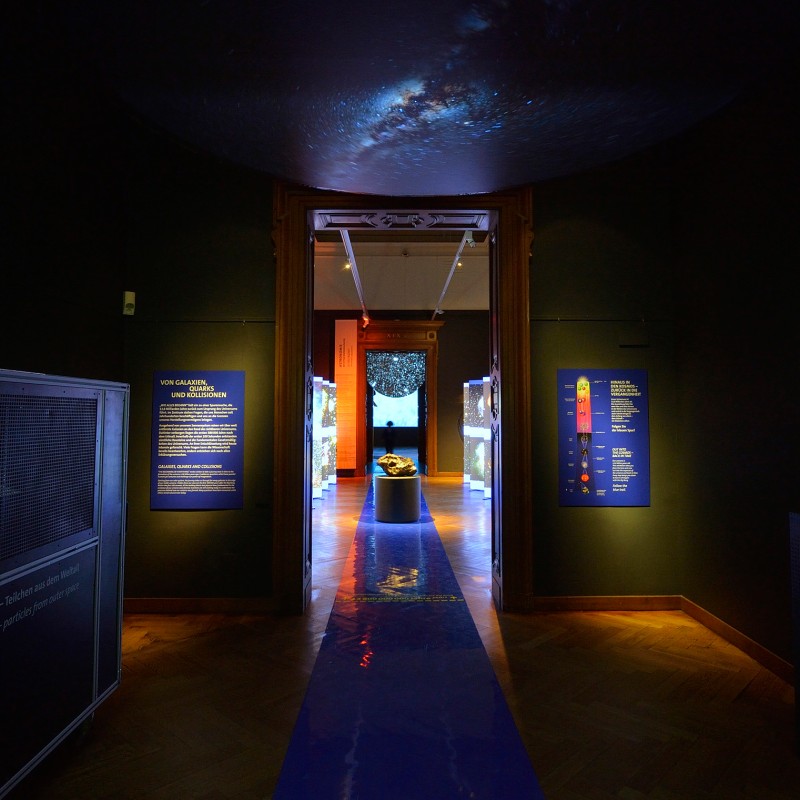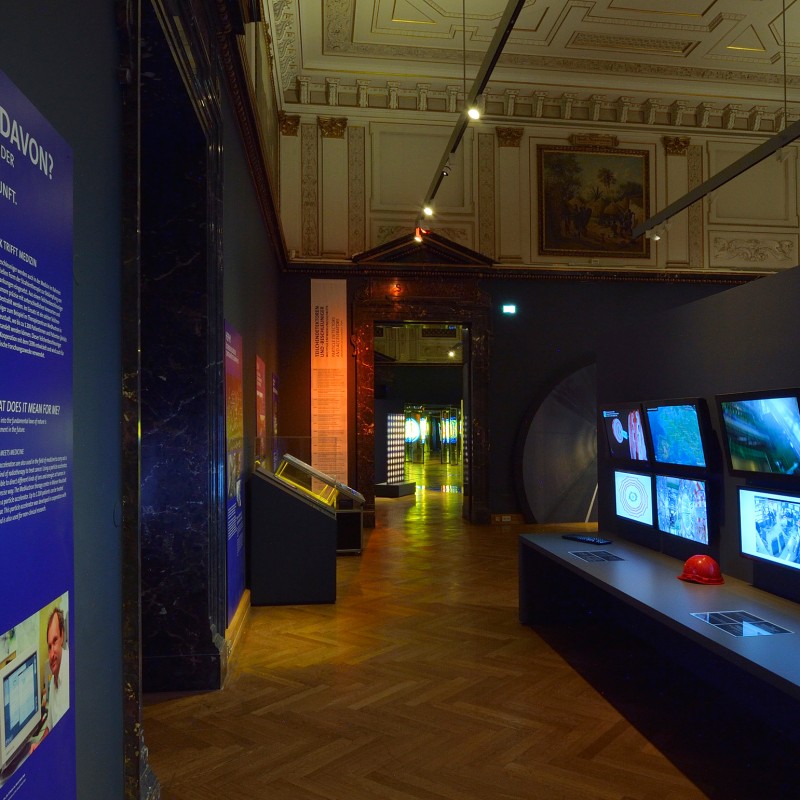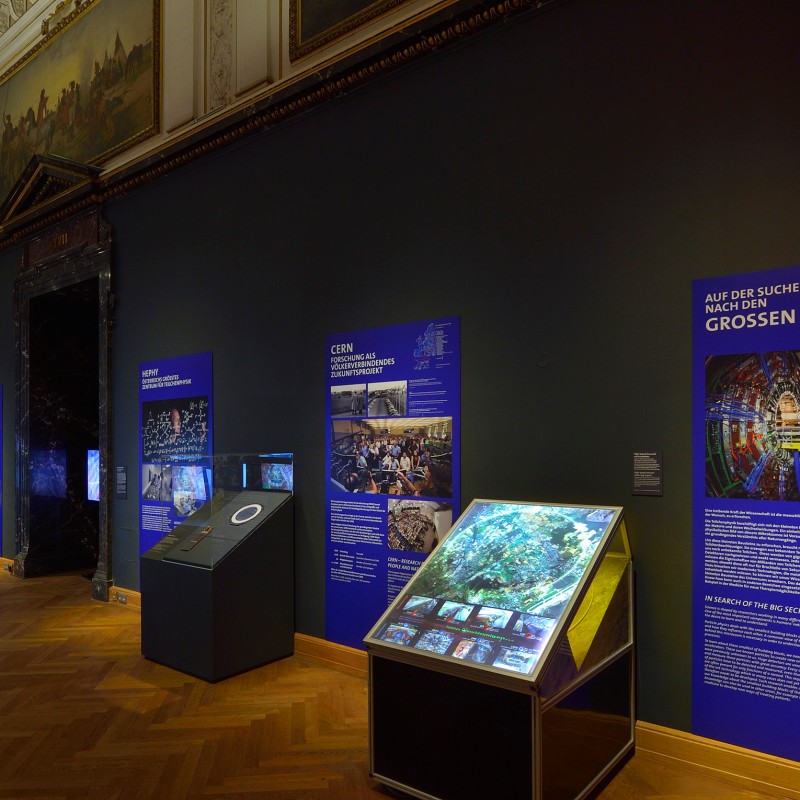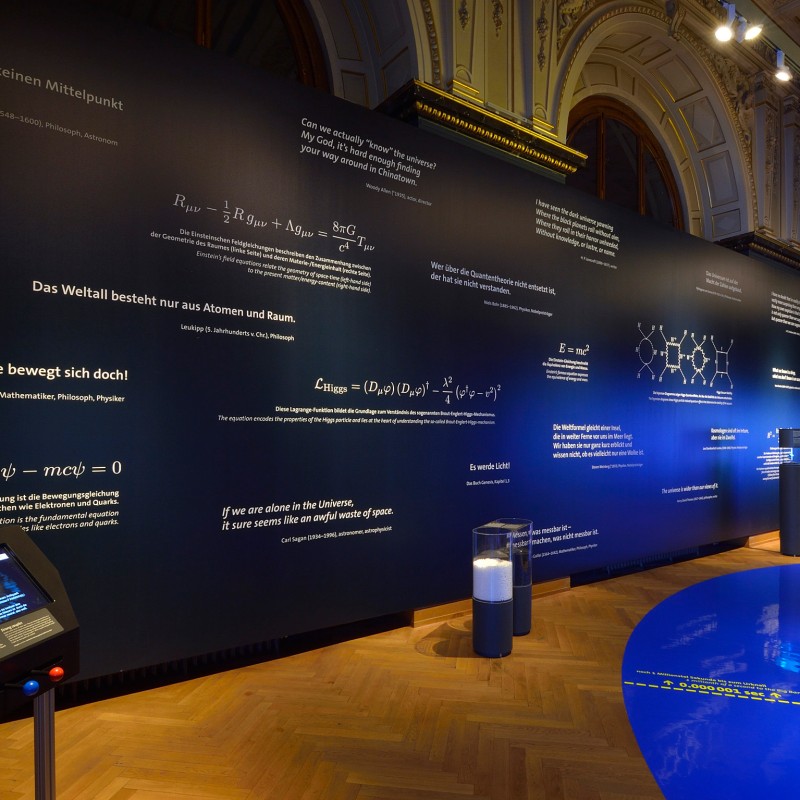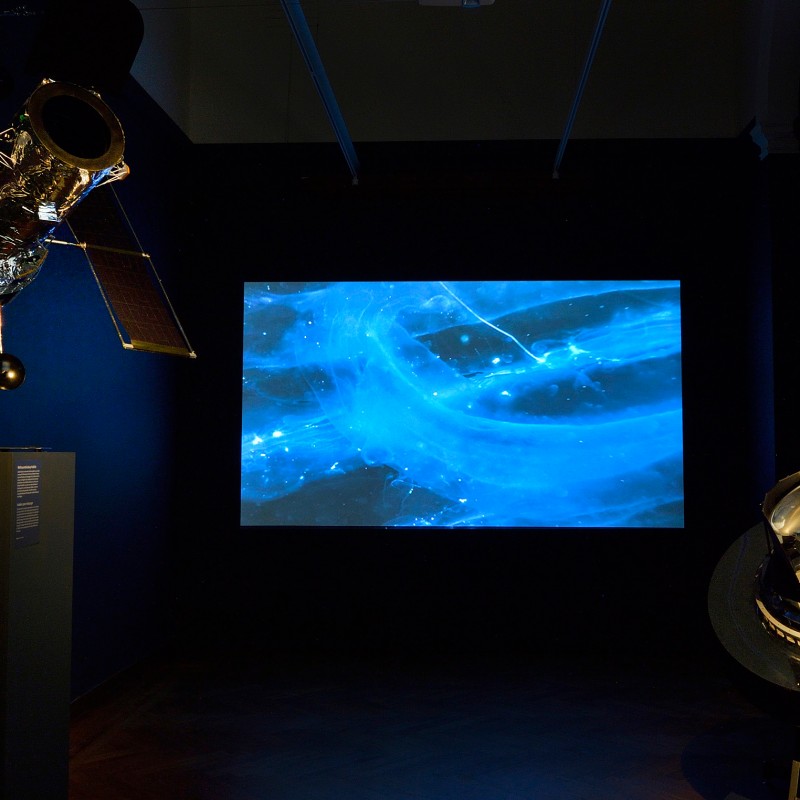“HOW IT ALL BEGAN. GALAXIES, QUARKS AND COLLISIONS”
18. October 2016
New special exhibition at the
Natural History Museum Vienna from
19 October 2016 until 1 May 2017
19 October 2016 until 1 May 2017
Invitation
to a media talk in the Lower Dome Hall followed by a visit to the exhibition on Tuesday, 18 October 2016 at 10:30
with
Univ.-Prof. Dr. Christian Köberl, Director General, NHM Vienna
Univ. Prof. Dr. Jochen Schieck, Director of the Institute of High Energy Physics (HEPHY) at the Austrian Academy of Sciences (ÖAW)
Prof. Eva Schlegel, Artist
Dr. Michael Barnett, Lawrence Berkeley National Laboratory, USA, Creator and Executive Producer of “Phantom of the Universe”
With fascinating images, intriguing scientific exhibits and room-size art installations, the exhibition “How it all began. Galaxies, quarks and collisions” takes visitors on a unique journey from the start to the end of our universe and addresses key questions which have occupied humankind for centuries:
What is the universe made up of? What is dark matter? Does the universe have a beginning and an end? And: What came before the Big Bang?
These questions take us to the limits of our knowledge and our powers of imagination. Some of them are answered in the exhibition using the latest scientific insights in the fields of particle physics and cosmology, brought to life through fascinating photographs, impressive graphics and exciting exhibits. Among the highlights is a 1:20-scale model of a huge particle detector as well as a live broadcast from Geneva showing the control room of the CMS Experiment at CERN, the world’s largest research center for particle physics. And for those who see science from a sporting perspective, there is even the chance to play football with protons!
Contemporary works by the artists Chris Henschke, Michael Hoch, Brigitte Kowanz, Hofstetter Kurt, Eva Schlegel and Manfred Wakolbinger showcase these fundamental questions of human nature from alternative visual and acoustic perspectives. The exhibition invites visitors to embark on a journey of discovery all the way back to the start of our universe, 13 billion years ago.
This show was created in cooperation with the Institute of High Energy Physics (HEPHY) at the Austrian Academy of Sciences (ÖAW).
Supported by the Austrian Lotteries and the Austrian Federal Ministry of Science, Research and Economy.
Illy is the coffee sponsor of press conferences at the NHM Vienna.
with
Univ.-Prof. Dr. Christian Köberl, Director General, NHM Vienna
Univ. Prof. Dr. Jochen Schieck, Director of the Institute of High Energy Physics (HEPHY) at the Austrian Academy of Sciences (ÖAW)
Prof. Eva Schlegel, Artist
Dr. Michael Barnett, Lawrence Berkeley National Laboratory, USA, Creator and Executive Producer of “Phantom of the Universe”
With fascinating images, intriguing scientific exhibits and room-size art installations, the exhibition “How it all began. Galaxies, quarks and collisions” takes visitors on a unique journey from the start to the end of our universe and addresses key questions which have occupied humankind for centuries:
What is the universe made up of? What is dark matter? Does the universe have a beginning and an end? And: What came before the Big Bang?
These questions take us to the limits of our knowledge and our powers of imagination. Some of them are answered in the exhibition using the latest scientific insights in the fields of particle physics and cosmology, brought to life through fascinating photographs, impressive graphics and exciting exhibits. Among the highlights is a 1:20-scale model of a huge particle detector as well as a live broadcast from Geneva showing the control room of the CMS Experiment at CERN, the world’s largest research center for particle physics. And for those who see science from a sporting perspective, there is even the chance to play football with protons!
Contemporary works by the artists Chris Henschke, Michael Hoch, Brigitte Kowanz, Hofstetter Kurt, Eva Schlegel and Manfred Wakolbinger showcase these fundamental questions of human nature from alternative visual and acoustic perspectives. The exhibition invites visitors to embark on a journey of discovery all the way back to the start of our universe, 13 billion years ago.
This show was created in cooperation with the Institute of High Energy Physics (HEPHY) at the Austrian Academy of Sciences (ÖAW).
Supported by the Austrian Lotteries and the Austrian Federal Ministry of Science, Research and Economy.
Illy is the coffee sponsor of press conferences at the NHM Vienna.
Das HEPHY, das Institut für Hochenergiephsik der Österreichischen Akademie der Wissenschaft, widmet sich der Ausbildung der
nächsten Generation.
© HEPHY, Markus Tordik
© HEPHY, Markus Tordik
Einer der tiefsten Blicke hinaus ins Weltall und damit zurück in der Zeit ist das Hubble Ultra Deep Field – eine Himmelsregion,
aufgenommen vom Hubble-Teleskop. Die kleinen roten Pünktchen sind einige der am weitesten entfernten Galaxien. Sie sind bereits
800 Millionen Jahre nach dem Urknall entstanden; ihr Licht ist seit etwa 13 Milliarden Jahren zu uns unterwegs. Die ältesten
beobachteten „roten Pünktchen“ und somit Galaxien unseres Universums sind etwa 13,4 Milliarden Jahre alt. Vor der Entstehung
dieser ersten Sterne und Galaxien herrschte hunderte Millionen Jahre lang Finsternis.
© NASA
© NASA
Unser eigener Stern, die Sonne, ist heute in ihrer ruhigsten Lebensphase, knapp in der Mitte ihres ca. 12 Milliarden Jahre
dauernden Sternenlebens. Am Anfang, vor knapp 4,6 Milliarden Jahren, sandte sie bedeutend mehr lebensfeindliche Ultraviolettstrahlung
aus als heute. Gegen Ende ihres Lebens, in etwa 6 Milliarden Jahren, wird sie als aufgeblähter Riesenstern die inneren Planeten
verschlingen. Als kleiner, durchschnittlicher Stern hat die Sonne dem Leben auf der Erde eine gute, relativ lange Chance gegeben.
© NASA
© NASA
Spiralgalaxie Messier 83, ein Zwilling unserer Milchstraße
Galaxien sind die mittelgroßen Bausteine unseres Universums. Sie bestehen oft aus vielen hundert Milliarden von Sternen und weisen eine Vielzahl an Erscheinungsformen auf. Die Milchstraße ist wie Messier 83 eine Balkenspiralgalaxie.
Fotografien zeigen nur leuchtende Materie wie Sterne, Gas- und Staubnebel. Ein großer Teil der Galaxienmasse bleibt darauf unsichtbar – die sogenannte „Dunkle Materie“.
© NASA
Galaxien sind die mittelgroßen Bausteine unseres Universums. Sie bestehen oft aus vielen hundert Milliarden von Sternen und weisen eine Vielzahl an Erscheinungsformen auf. Die Milchstraße ist wie Messier 83 eine Balkenspiralgalaxie.
Fotografien zeigen nur leuchtende Materie wie Sterne, Gas- und Staubnebel. Ein großer Teil der Galaxienmasse bleibt darauf unsichtbar – die sogenannte „Dunkle Materie“.
© NASA
Ausstellungsansicht „Wie alles begann. Von Galaxien, Quarks und Kollisionen“
© NHM Wien, Kurt Kracher
© NHM Wien, Kurt Kracher

